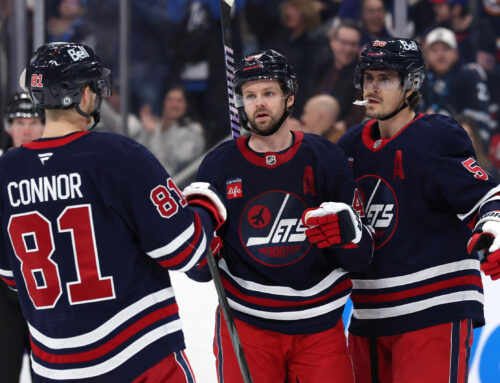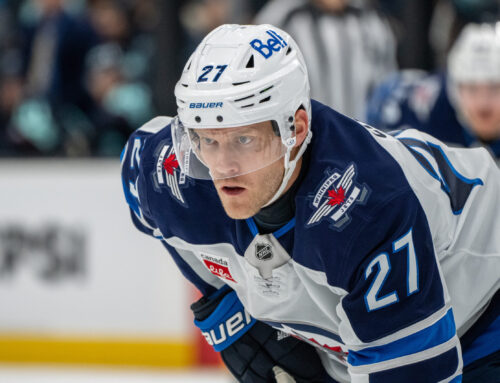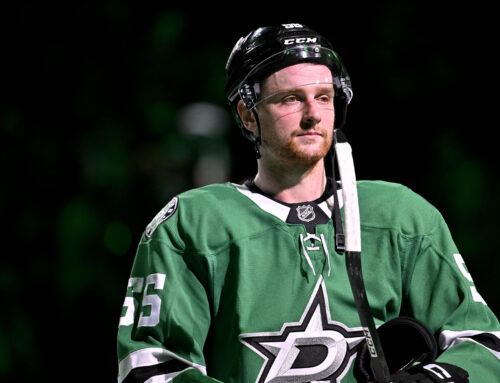
Libin looks back on his preseason predictions. He had his share of hits…and misses, too. Take a look
Before starting the fantasy outlooks for each of the Western Conference teams it seems to be the appropriate time to look back where the predictions made in this column went right and wrong this season. This will be done by going over the projections made for newcomers, breakouts, players likely to rebound and those likely to decline.
Players who will decline
This may have been the prediction column that fared the best this season, and may even have been a little conservative. This column accurately identified five players who would decline this year and generally for the right reasons. Bouma suffered while away from Backlund and his shooting percentage took a major hit as well. The Sedins did not see anywhere close to their previous season’s power play nor did they have the same success with the opposition’s net empty. The latter is more a reflection of how bad the Canucks were than anything the Sedins did differently. Kevin Shattenkirk had an amazing season on the power play in 2014/15, which buoyed him to a 66-point pace. The inability to repeat that power-play success saw him put up one more power play point this season in 16 more games. Part of that is due to the 40-second reduction in per game power-play minutes that he saw, but that was countered by his elevated shooting percentage and shot rate.
Trevor Daley is a bit of a mixed bag, the projection that he would decline was correct but he was well below the expected pace in Chicago and has been well above it in Pittsburgh. His defensive shortcomings were too great for Coach Quenneville to ever fully trust him in Chicago, whereas in Pittsburgh a dearth of other puck moving defensemen has vaulted him to the top pairing. In Chicago the misgivings expressed in this column came to the forefront as he never received greater than second unit power play minutes and eventually became a third pairing defenseman when he was unable to handle the tough minutes that are required from Niklas Hjlamarsson. The major gaffe in the decline column was Troy Brouwer where he got more power play than expected. He took a major hit to his power play minutes but still saw close to two minutes per game. This resulted in a four-point drop as opposed to the predicted 10-point drop as Brouwer’s shot rate and shooting percentage remained largely unchanged.
Breakouts
Where the decline column was largely accurate this column was close to an abject disaster. Of the four players only Granlund came even remotely close to hitting 50 this past season. Granlund saw improvements in his game as he finally averaged two shots per game and he managed to bump his IPP from a lowly 50% last year to 75% this year. Granlund even saw a boost in his power play minutes but the Wild generated less shots when he was on the ice and his on-ice shooting percentage dropped to just over six percent. The result was the Granlund was on the for a third less goals this year than last, meaning that even with the positive developments in his game he did not have a chance at a breakout. Yakupov started the season looking like he had a shot at 70 points given his chemistry with McDavid. It was not to be however as after McDavid got injured Yakupov’s production plummeted and he never rediscovered his game. Amidst rumours that he has asked to be traded this may have been his last season in Edmonton and it may be for the best.
Jakob Silfverberg was coming off a great playoff and it looked like he was ready to make the jump to a scoring role for the Ducks. That did not materialize as he ended up playing primarily with Ryan Kesler, which is not necessarily a negative as he seems to thrive in that capacity. Silfverberg without a doubt had his best months later in the season as Kesler heated up as well. Silfverberg is even carrying a late season hot streak into the playoffs where he is once again a point per game player. If there is a specific factor at which to point in this case it may very well be the Ducks early season struggles, which brought down point totals around the team. The most disappointing of the failed projections may be Craig Smith. After three years of his shot rate his steadily rising Smith’s shot total plummeted to under 200 shots this year. Smith is not enough of a distributor of the puck for hum to be able to put up big point totals without being a volume shooter. It also does not look like he is likely to get the minutes that would help him take the next jump in his shot rate.
Newcomers
The newcomers column was mixed bag of predictions but the most notable predictions are the major misses on Artemi Panarin and Max Domi. The Panarin prediction was based on the struggles of previous imports from the KHL and Europe however Panarin should have been looked more like an elite prospect coming over than as a veteran. This oversight could have been avoided just by paying more attention to translation factor for the KHL as younger players tend to fare better when coming to the NHL, especially when they are high-end talents. It would have been very hard to foresee the chemistry he had with Kane but nonetheless there were signs that he would that he would fare better than predicted, especially given that his out-clause was wholly ignored. Max Domi got out to a very fast start in part due to a very high on-ice shooting percentage although that evened out over the season. Domi benefited from being on a Coyote team that lacked offensive talent as he received three minutes per game of power play time and 16 minutes overall. There is lots of room for Domi to grow as well as he took less than two shots per game. There is third prediction that was significantly off as Brandon Gormley never received the opportunity necessary to even dream of 20 points. On a porous defense corps lacking talent as is Colorado’s that was surprising but guessing Patrick Roy’s player usage has proven to be a fool’s errand.
The successful predictions were split into two groups, the predictions of success and those of failure. Viktor Tikhonov is a prime example of the latter as he was scarcely used in Chicago and only had success in Arizona when Hanzal was out of the lineup, although he did get some top six run late in the season. Either way Tikhonov is a bottom six forward who is capable of providing value in the peripheral categories but struggles to get enough points to warrant having him on a fantasy roster. Alex Burmistrov also came over from the KHL and had considerably more success although in a bottom six role for the Jets. The prediction was accurate because as expected Burmistrov failed to get significant power play time behind a deep Jets forward corps. Even after Ladd was traded and Little went out with injury Burmistrov was unable to make significant gains in production, never breaking a 30 point pace.
Rebound
The rebound column was another bright spot as with the exception of Nikita Zadorov, who had an abominable season, all had quality bounce back seasons. He was bad enough this season that he was demoted to the AHL where he found some semblance of his game. Roy has done this before, most notably with Tyson Barrie, but he has failed to find the same success with Stefan Elliott or Brandon Gormley. This should have been a situation where Zadorov could thrive but he was unable to adapt to the chaos that is the Avalanche defensive system. The predictions for the other defensemen in the column were significantly better as Sekera found a similar recipe to the success he had in Carolina. He could have done even better had the Oilers power play been better or if Sekera had more shooting luck. With a full season of McDavid and a spot on the top power play unit Sekera should do even better than last year. Dumba has similar reasons for his success as Sekera, namely that he was finally given power play time for the Wild. He also had considerably more success after the Wild’s coaching change as he put up 15 points in his final 32 games with the corresponding jump in power play time.
Taylor Hall saw quite the return to from, although he was unable to reach the point per game level he has formerly achieved. The predicted reason for Hall’s rebound this year was the expectation that he would play with McDavid for most of the season, however Hall owes much of his return to form to the chemistry he found with Leon Draisaitl. He might have reached the point per game mark had the duo not slowed significantly late in the season. This was in large part due to some highly inflated shooting percentage numbers regressing to the mean. That regression though was not to Hall’s own shooting percentage but rather to his on-ice shooting percentage. Hall’s rebound should continue in to next season as the Oilers are on the right track. Lucic was an easy call to rebound as the Kings had all the makings of a good fit for his game. As expected he had considerable success playing alongside Kopitar, accruing 23 of his 40 even strength points when they played together. A concerning development though is that Lucic barely averaged a shot and a half per game, while never a volume shooter this is an especially low total. Finally MacKinnon came up short of the predicted 60 plus points this season with his 52 points in 72 games effort. His game, and the underlying numbers, looked very similar to his rookie season as opposed to his disappointing sophomore season. His shots were back up over three per game, and the season could have gone much better had his shooting percentage rebounded as well.





 MTL
MTL
 PIT
PIT FLA
FLA S.J
S.J CGY
CGY MIN
MIN
